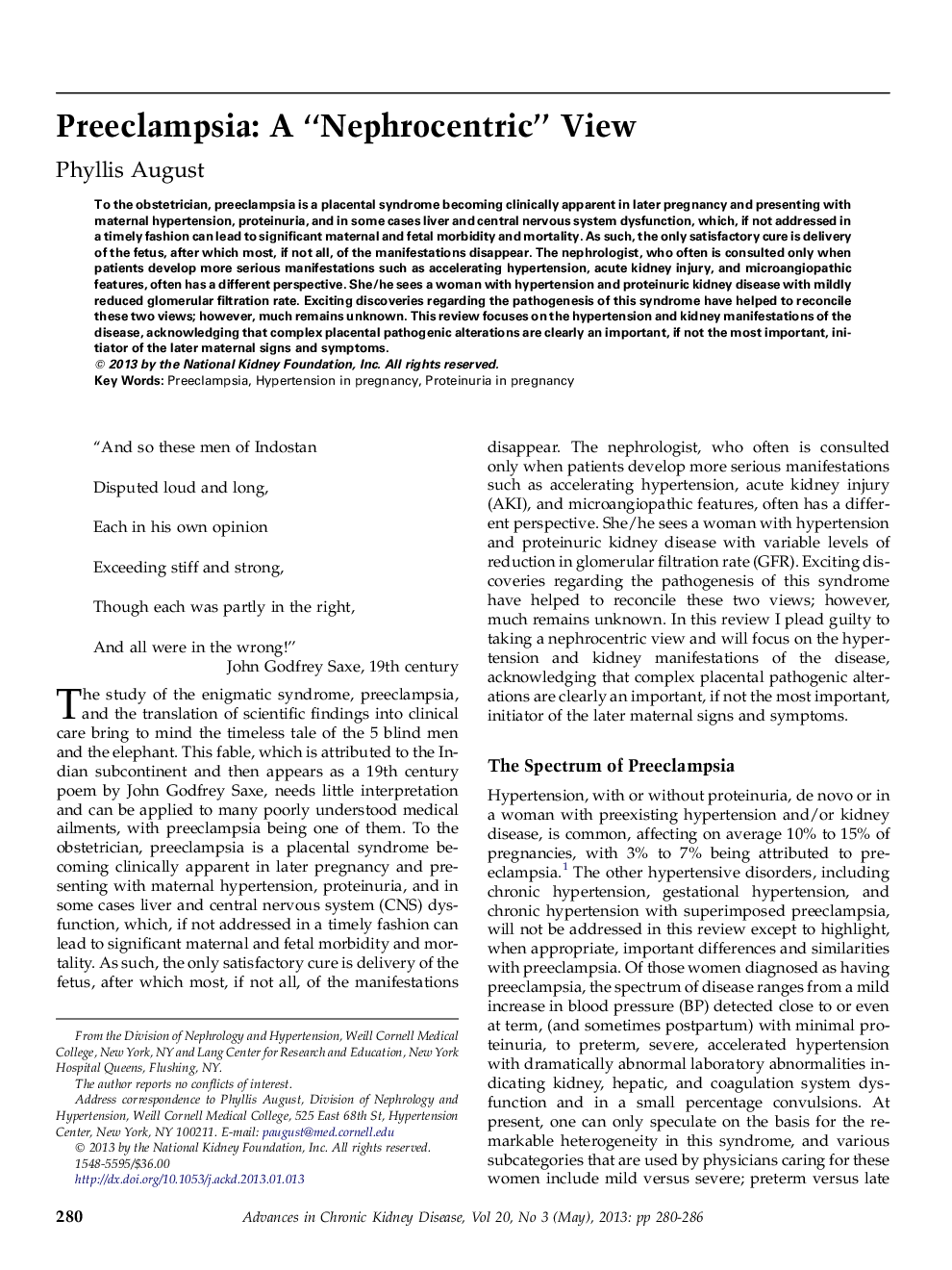| Article ID | Journal | Published Year | Pages | File Type |
|---|---|---|---|---|
| 3846713 | Advances in Chronic Kidney Disease | 2013 | 7 Pages |
Abstract
To the obstetrician, preeclampsia is a placental syndrome becoming clinically apparent in later pregnancy and presenting with maternal hypertension, proteinuria, and in some cases liver and central nervous system dysfunction, which, if not addressed in a timely fashion can lead to significant maternal and fetal morbidity and mortality. As such, the only satisfactory cure is delivery of the fetus, after which most, if not all, of the manifestations disappear. The nephrologist, who often is consulted only when patients develop more serious manifestations such as accelerating hypertension, acute kidney injury, and microangiopathic features, often has a different perspective. She/he sees a woman with hypertension and proteinuric kidney disease with mildly reduced glomerular filtration rate. Exciting discoveries regarding the pathogenesis of this syndrome have helped to reconcile these two views; however, much remains unknown. This review focuses on the hypertension and kidney manifestations of the disease, acknowledging that complex placental pathogenic alterations are clearly an important, if not the most important, initiator of the later maternal signs and symptoms.
Related Topics
Health Sciences
Medicine and Dentistry
Nephrology
Authors
Phyllis August,
